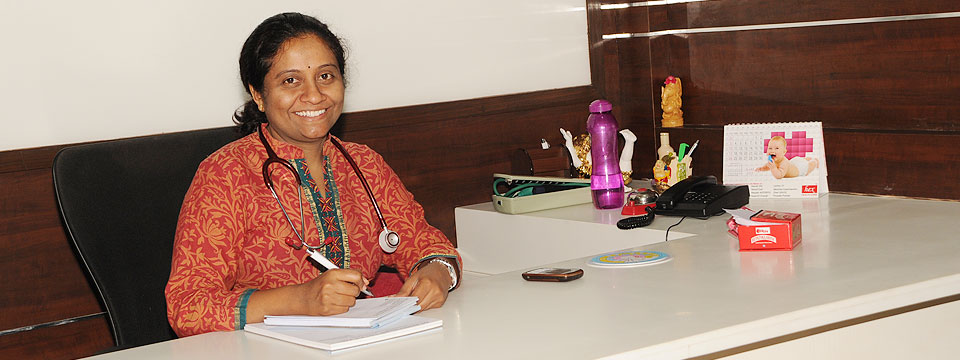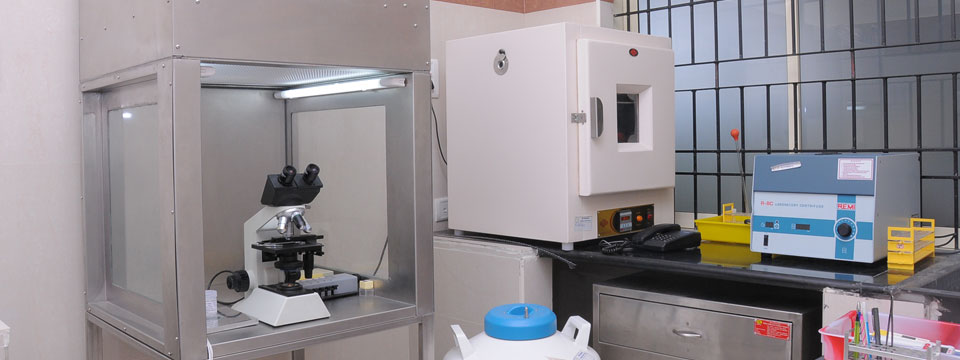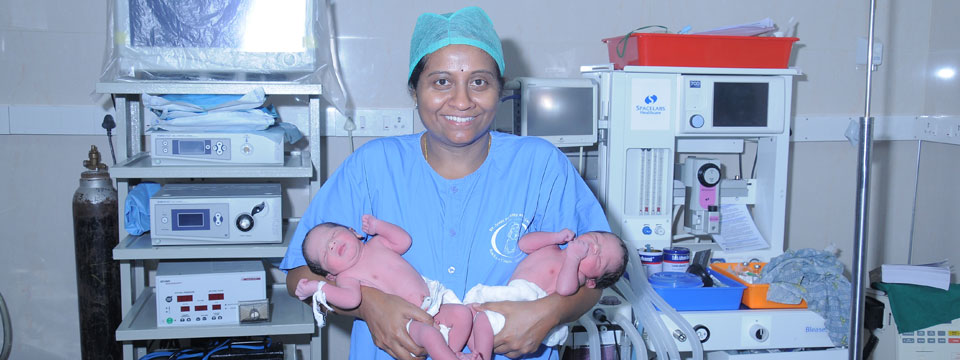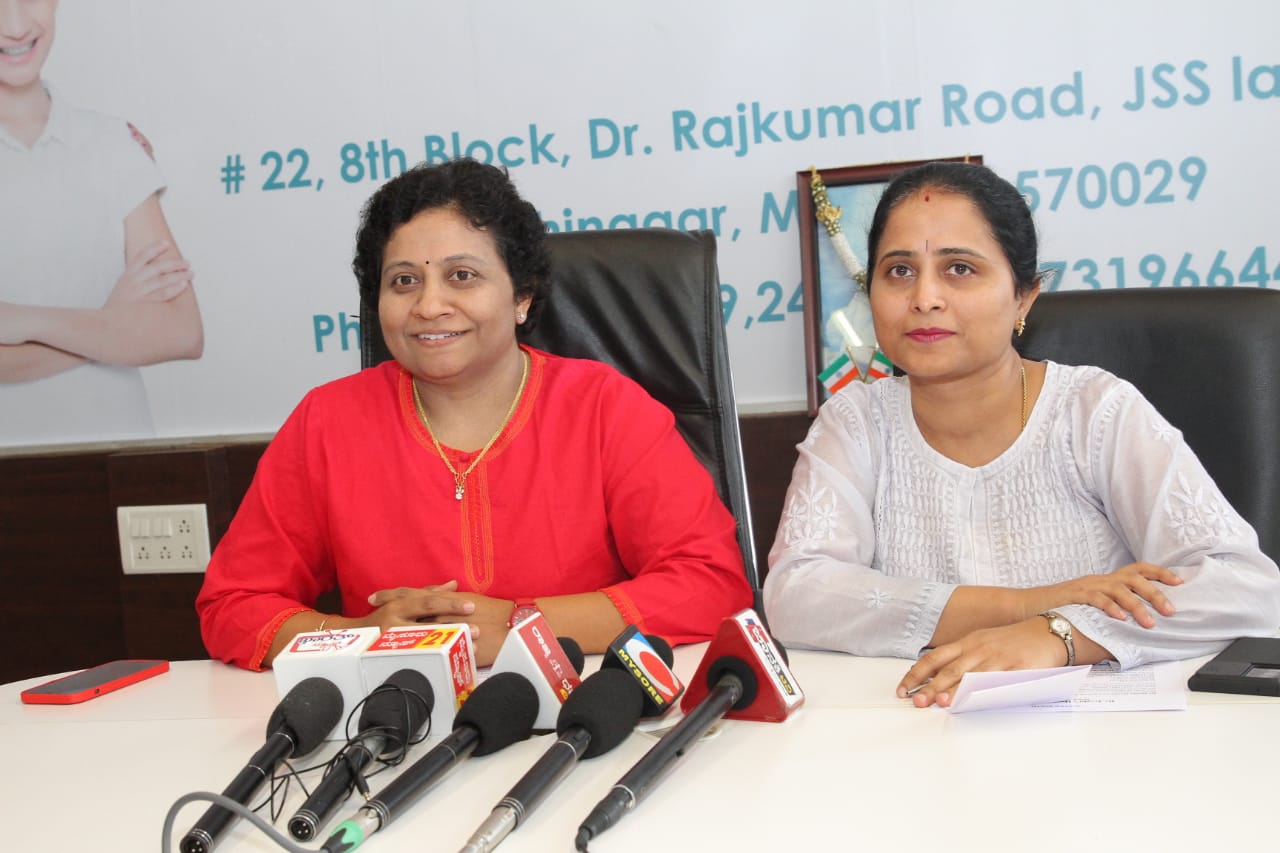FAQs (Frequently Asked Questions)
Ques:What are the causes of infertility?
Ans:Approximately 40% is of male origin, 40% of female origin and in 20 % there is no obvious identifiable cause. Many couples have combined male and female causes.
- The male causes result in a reduction in quality and quantity of sperms.
- The female causes can include one or more of the following:
- Endometriosis
- Ovulation defects including polycystic ovarian disease (PCOD).
- Fallopian tube blockage or disease.
Ques:When should we seek medical help?
Ans:Most doctors advise you not to be concerned unless you have been trying to conceive – not using birth control and having regular intercourse around the time of ovulation – for at least a year.Women with certain symptoms or previous medical conditions may wish to seek medical advice earlier. Some symptoms or prior conditions make fertility problems more likely, and others may indicate a medical condition that needs treatment for other reasons. Seek medical advice if:
- You have lots of pain during your menstrual period or during intercourse.
- You have an abnormal menstrual cycle (less than 21 or more than 35 days from the first day of one cycle to the first day of the next).
- You are troubled by acne or excess facial or body hair.
- You have had pelvic inflammatory disease (PID), an infection in the reproductive organs, usually the fallopian tubes.
- You have had surgery on your reproductive organs, such as a cone biopsy of the cervix.
- You have had more than one miscarriage
- Your partner has an abnormal sperm analysis
Ques:Do we both need to be tested?
Ans:Almost always. Both male and female factors can contribute to a couple’s infertility. For efficiency, diagnostic testing may focus first on tests that are less invasive (such as a semen analysis) or those that may confirm a suspected problem (such as a test for blocked fallopian tubes if a woman has had a pelvic infection).
Ques:Does age affect fertility?
Ans:In general, women’s fertility begins to decline gradually after age 30 with a steep drop between 35 and 45. This means that, on average, it takes longer for an older woman to conceive, and older women are more likely to be diagnosed with infertility. Pregnancies in older women are also more likely to miscarry. The most predictable age related change is a gradual reduction in the number and quality of eggs produced as a woman enters her late thirties. As she nears menopause, eggs are not released in more and more of a woman’s menstrual cycles, making conception impossible. Also, as women age, they are more likely to have had illnesses or medical treatments that can compromise fertility. Some of these affect the reproductive system directly, such as endometriosis, sexually transmitted diseases (STDs), surgery on the reproductive organs, or ectopic pregnancies. Others are general medical problems that can damage that can damage fertility,such as hypothyroidism, high blood pressure, diabetes and lupus.
As they age, men may also be exposed to infections, medications, or occupational or environmental chemicals that can impair fertility. However, they do not experience the same dramatic and predictable agerelated decline as women.
Ques:How is the cause of infertility identified?
Ans:An infertility workup will involve tests to determine how well each of the systems involved in conception is working.
Ques:What is fertility counseling?
Ans:One form of fertility counseling occurs when you have a private discussion with a sympathetic nurse counsellor. You share with her your feelings and concerns about your fertility status, the treatment program and your chances for pregnancy. She will listen patiently to you and answer your questions as best she can. She will assist you in resolving your concerns and enable you to decide on the next course of action.
Ques:What are some of the complications of treatment by IVF?
Ans: A complication is an undesirable effect associated with treatment.
The main complication of IVF is ovarian hyperstimulation syndrome (OHSS).
The second complication is multiple pregnancy with more than twins. Eg triplets, quadruplets etc.
The third is ectopic pregnancy. The other rare complications include bleeding and infection from the needle puncture at egg collection.
Ques:How can I be sure that the IVF laboratory will not mix up any of my sperm, eggs or embryos with those from another patient?
Ans:Petri dishes and test tubes containing sperm, eggs or embryos are labeled with duplicate identifying information for each patient and color coded to prevent mix-ups. Any tubes or dishes that are used in the processing of the sample will contain their full name and their partner's full name and will be color coded. In addition to these labeling procedures, there is a cross-checking system to prevent human errors. Each time a procedure is performed by an Embryologist, a second member of the laboratory staff has to witness the event before they are released to a Physician. If the sperm are being used to inseminate his partner's eggs, a second member of the laboratory staff verifies that the correct eggs and sperm have been removed from the incubator before the Embryologist performing the procedure can actually proceed with the insemination of the eggs. At the conclusion of the procedure, both Embryologist and staff sign the patient's chart, which is the legal record of the procedure. These same checks and balances are used during each laboratory procedure and can be seen in action by patients having embryo transfers. At transfer time, the Embryologist performing the transfer will ask the patient their full name and repeat the name back to the patient to verify what they heard. The identity of the dish containing the embryos is double checked by the Embryologist and the embryos are loaded into the transfer catheter. As the catheter is handed over to the Physician, the Embryologist will repeat the patient's name and give details of the contents of the catheter. Surplus embryos being frozen after a transfer are catalogued with full name, ID, date of freezing and details of the embryos being frozen. Embryos are frozen inside special straws and in addition to careful labeling, color-coding is also used as an added precaution. As with other procedures, a second member of the laboratory staff has to witness the procedure and verify patient and embryo details for any freezing or thawing event.
Ques:What happens at egg collection?
Ans:You will not have food nor drink for six hours before the procedure. You will empty your bladder and be placed under a short general anesthesia for usually less than fifteen minutes. A 14 gauge needle will be inserted under vaginal probe ultrasound scanning. The follicles will be emptied systematically and the aspirated fluid will be examined under a dissecting microscope for the cumulus- oocyte complex. Antibiotics will be given and after a 3-4 hours rest, you can go home. You may experience a little lower abdominal discomfort for a short while and some pain relief medicine will be given to you to bring home. There may be some bleeding from the vagina after egg collection. This is usually minimal and would stop within two days.
Ques:What is ICSI?
Ans:Intra Cytoplasmic Sperm Injection (ICSI) is a modification of IVF. ICSI is a procedure in which one immobilized sperm is sucked into a very narrow pipette and then injected inside the egg, allowing fertilization to take place. It is usually employed when sperms are unable to enter eggs by their own power. Most forms of male infertility can be solved by use of ICSI and sperm donation is less necessary. ICSI can also be used to maximize the yield of embryos.
Ques: I've heard that having embryos transferred at the blastocyst stage gives really high pregnancy rates. Shouldn't every IVF patient have this procedure?
Ans: Embryos that have grown successfully in the laboratory for 5 or 6 days are called blastocysts. They have gone beyond the stages where it was possible to count the number of cells that they contain and have begun to differentiate into 2 different cell types. A normal blastocyst should have developed by day 5 or day 6 after egg retrieval and the outer cells (trophectoderm) and inner cells (inner cell mass) should be clearly visible. These cells give rise to the placenta and fetus respectively. Since the blastocyst now has the first placenta cells, it is ready to hatch from its shell and implant in the uterus. On average, about 53% of fertilized eggs will develop to the blastocyst stage. This number will be lower in older patients, and higher in young patients. Younger patients tend to have more eggs and therefore embryos, which will give them a greater chance of having some embryos that develop into blastocysts. The main advantage of keeping the embryos to day 5 in the laboratory is that we are able to select those embryos most likely to successfully create a viable pregnancy. If the desired number of embryos for transfer is achieved by day 3 (for example, there are only 2 or 3 good embryos on Day 3), there may be no particular advantage to keeping them in the lab any longer and they should go ahead and be transferred back to the patient on Day 3.
Ques:What is the Ideal Number of embryos to be transferred?
Ans:Usually two embryos are placed inside your uterus at a time. This is because the chance of pregnancy is low when only one embryo is transferred. On the other hand, there is the possibility of a triplet pregnancy with three embryos transferred. Triplet pregnancy carries a higher chance of premature delivery and should be avoided.
The actual decision in each case would depend on various factors. The transfer of three embryos is considered if you are above the age of 37, have a raised basal FSH level, or have been unsuccessful in previous attempts at IVF.
Ques:Can I have sex with my husband during th two weeks after embryo transfer?
Ans:It has not been proven that avoiding coitus during the two weeks after embryo transfer makes any difference to the chance of pregnancy. However most couples prefer to abstain from coitus.
Ques:What is Implantation?
Ans:This is the process by which the hatched embryo attaches itself to the internal lining of your uterus and starts to take nutrition and oxygen from you. This takes place a few days after embryo transfer and you will not be able to feel it.
Ques: How are embryos frozen?
Ans: Embryos can be frozen at different times after fertilization. Most typically, embryos are frozen 5 or 6 days after the sperm and egg were combined, but they can also be frozen immediately after fertilization (day 1) or any day thereafter. Freezing is a stressful process for an embryo, and only embryos that are growing well in the laboratory will tolerate the freezing procedure. Before an embryo can be frozen, all the water that it contains must be removed. Since water expands in size as it turns to ice, water inside the embryo would burst (kill) the embryo if we simply placed it in the freezer. To prevent the embryo from shriveling as the water is extracted, we replace the water with an antifreeze (or cryoprotectant). Antifreeze is a solution that does not expand in size when it freezes. The embryo is cooled to room temperature as the water is replaced with antifreeze. The water is removed from the embryo in 2 stages using a weak and then a strong cryoprotectant solution. When most of the water has been removed the embryo is inserted into a tiny straw, and plunged into liquid nitrogen at a temperature of -196°C. This ultra-rapid cooling process is called vitrification and embryos tolerate the procedure very well. Over 90% of all embryos vitrified survive the process and are available for transfer in as little as 20 minutes after being warmed out of the freezer.
Ques: How are embryos thawed?
Ans: Thawing the embryos is simply a reversal of the freezing procedure. The embryos coming out of the freezer (at –196°C) are warmed to room temperature in 3 seconds. This rapid thaw method minimizes damage to the embryo from ice crystals that can form during warming. The embryologist has to remove the antifreeze from the embryo and replace the water that was removed at the time of freezing. This is done by incubating the embryo in decreasing concentrations of the antifreeze, and increasing concentrations of water. Over a period of 15 minutes, the embryo is stepped through 3 different solutions, until finally the antifreeze is gone and all the water has been replaced. The thawing procedure is performed at room temperature, and once complete, the embryo is warmed up to body temperature (37°C). It can be ready for transfer in as little as 20 minutes after leaving the freezer.
Ques: If all the embryos aren’t transferred, what happens to them?
Ques: Am I more likely to have a child with a genetic or congenital abnormality because I'm pregnant after a frozen embryo transfer?
Ans: Even after 20 years, there are few studies in the scientific and medical literature concerning outcomes after embryo cryopreservation. However, the few studies that have been published are thus far reassuring. Children born from frozen embryos do not seem different from children born from embryos that had not been frozen. Even if an embryo loses one or more of its cells during thawing, this does not cause any abnormalities. Freezing does not cause or introduce genetic abnormalities. The only risk associated with freezing, is that the embryo might not tolerate the procedure, and could lose so many cells that it is no longer strong enough to implant and establish a pregnancy.
Ques:What are the factors which influence outcome?
Ans:The chance of pregnancy is influenced by your age and your basal FSH level. In general, the younger you are, the better the outcome.
The chance of pregnancy is also dependent on the number of embryos transferred. Although more embryos transferred increases the chance of pregnancy, it also results in a higher chance of multiple pregnancy with its associated problem of premature births. In practice, two or three embryos are transferred..
Ques:What is PCOD (poly cystic ovary disease)?
Ans:Poly cystic ovary disease is a benign condition in which there are many small follicles in the ovaries. This condition is associated with impaired insulin metabolism. It is manifested by irregular and infrequent menstrual cycles, sub-fertility, and a higher rate of miscarriage. Women who are given ovulation inducing medication often over- respond resulting in ovarian hyperstimulation syndrome.
Metformin partially corrects the effects of PCOD. Metformin is an anti-diabetic medicine. It's side effects include dyspepsia and weight loss. It can be started in gradually increasing doses of 500mg after meals up to three times a day. Continuation of Metformin during pregnancy appears to reduce the chance of miscarriage.
Ques:What is Hysteroscopy?
Ans:Hysteroscopy is a procedure of inspecting the inside of the uterus with an optical instrument (hysteroscope) inserted through the cervix from below. This allows abnormalities in the uterine cavity to be seen and dealt with. Hysteroscopy performed before IVF is useful because it permits polyps and other problems within the uterus to be seen and corrected. It also enlarges and smoothens the canal leading from the neck of the uterus (cervix) to the uterine cavity proper. This ensures ease of replacement of the embryo and improves the chance of pregnancy.
Hysteroscopy is usually done as a day surgery procedure. A tablet of Cytotec is placed in the vagina two hours before the procedure to cause the neck of the uterus to open. A short general anesthesia allows hysteroscopy to be performed painlessly. Saline or glycine is infused at 100mm Hg. to distend the uterine cavity in order to allow the inside of the uterus to be inspected.
Ques: Are the hormone treatments harmful for me or for our (future) child?
Ans: As stated in this guide, the hormones administered during IVF treatment may have some side-effects. Fortunately, they are not serious and are only temporary. Claims that the hormones used in IVF treatment can be carcinogenic or have other ‘harmful’ effects are not founded on medical data.Moreover, these hormones were administered to women with infertility problems on a large scale long before IVF treatments were developed, without any harmful effects. Also with regards to children born from IVF/ICSI up until now no study has proven that (certain) cancers would occur more frequently than with children who were conceived without hormonal stimulation. Having said that, research regarding the effects of hormone treatments is still conducted worldwide in the interests of safety.
Ques: Will my infertility specialist see me through the pregnancy?
Ans: Yes, we take care of your pregnancy. Our Infertility specialist is a practising Obstetrician and Gynaecologist. We provide pre-natal care in the same program.












